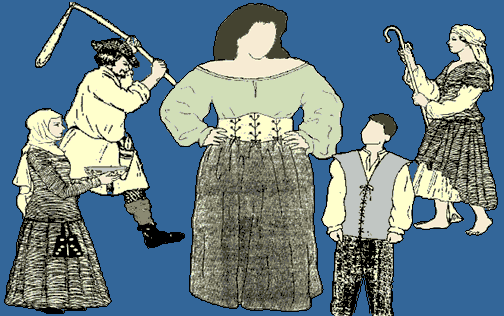
On May 3rd and 4th 2003 we performed Carmina Burana, an energetic work by Carl Orff, the German composer and folklorist. The grand finale of the Santa Cruz Symphony brought out the largest audiences of season. The chorus looked fantastic in medieval costumes and the children from the Cabrillo Youth Chorus performed with "winning style." Here is a link to Phyllis Rosenblum’s review in the Santa Cruz Sentinel. An excerpt: "The chorus’s precise pronunciation and togetherness ensured forward momentum in the work’s many rhythmic staccato sections. Impressive dynamic contrasts — no mean feat with such a large body of singers — set musical phrases in sharp relief. Chorus sopranos sang with youthful simplicity in the love longings of "Floret silva" (the forest blooms)." Here is a site that has the Lyrics to Carmina Burana with the English translation and annotations of names and classical references,and here is a FAQ about the piece. You may print the lyrics (without the English translation) from this page. Medieval
peasant costume ideas The LookIt's time to start thinking about your simple medieval peasant costume. You are responsible for gathering and creating your garb. The look is medieval peasant, NOT Camelot, Renaissance Faire, King Arthur's Court or Robin Hood. The color scheme is beige, brown, rust and off-white with accent colors of muted blues and greens. Avoid red, orange, yellow and purple. Also please avoid (or hide) zippers and buttons (especially in front.) Avoid shiny fabrics, prints, patterns, jewelry and watches. MenShirts: All sleeves should be full or 3/4 length. They can be rolled. Avoid modern, dress-style collars and cuffs. Go for blousy look; "poet" or "artist" type shirts, smocked, or gathered; peasant shirts, but without colored embroidery. Long sleeve tee-shirts with collar and cuffs cut off will work in a neutral color. Legwear: Leggings and Tights are preferable! Borrow them from your women friends. Remember, non-shiny earth tones; black is okay. Or loose fitting pants; khaki, beige, brown, rust or black. Shorts can be worn if adapted as shown in the illustrations handed out in class. NO JEANS! Codpieces: Highly desirable! We will provide about twenty custom-fitted codpieces (donations cheerfully accepted) but feel free to show off your own (so to speak!) We know you've always wanted to wear one. Tunics of various lengths can be easily sewn, or even not sewn but left open at the sides. They can have long sleeves or be worn over a shirt. Belts: rope, fabric sashes, rustic looking leather. Head Gear: Cowls, hoods, caps and capes, as shown in the illustrations.
Bare head is okay. WomenSkirts and Dresses should be mid-calf or longer. Sleeves should be long or 3/4. Aprons, Tunics and Overvests desirable. Peasant Blouses: avoid short sleeves or colored embroidery. Head Gear: Wimples, cowls, scarves, flowers, ribbons are all wonderful. Bare heads are okay, too. Footwear:For men and women, sandals, Birkenstocks, ballet shoes, tai-chi shoes, clogs, moccasins, Ugg boots, T-straps, flat-soled boots, pointy-toed cloth shoes will all work in brown or black. |
© Copyright 2001 I-Spark Design
